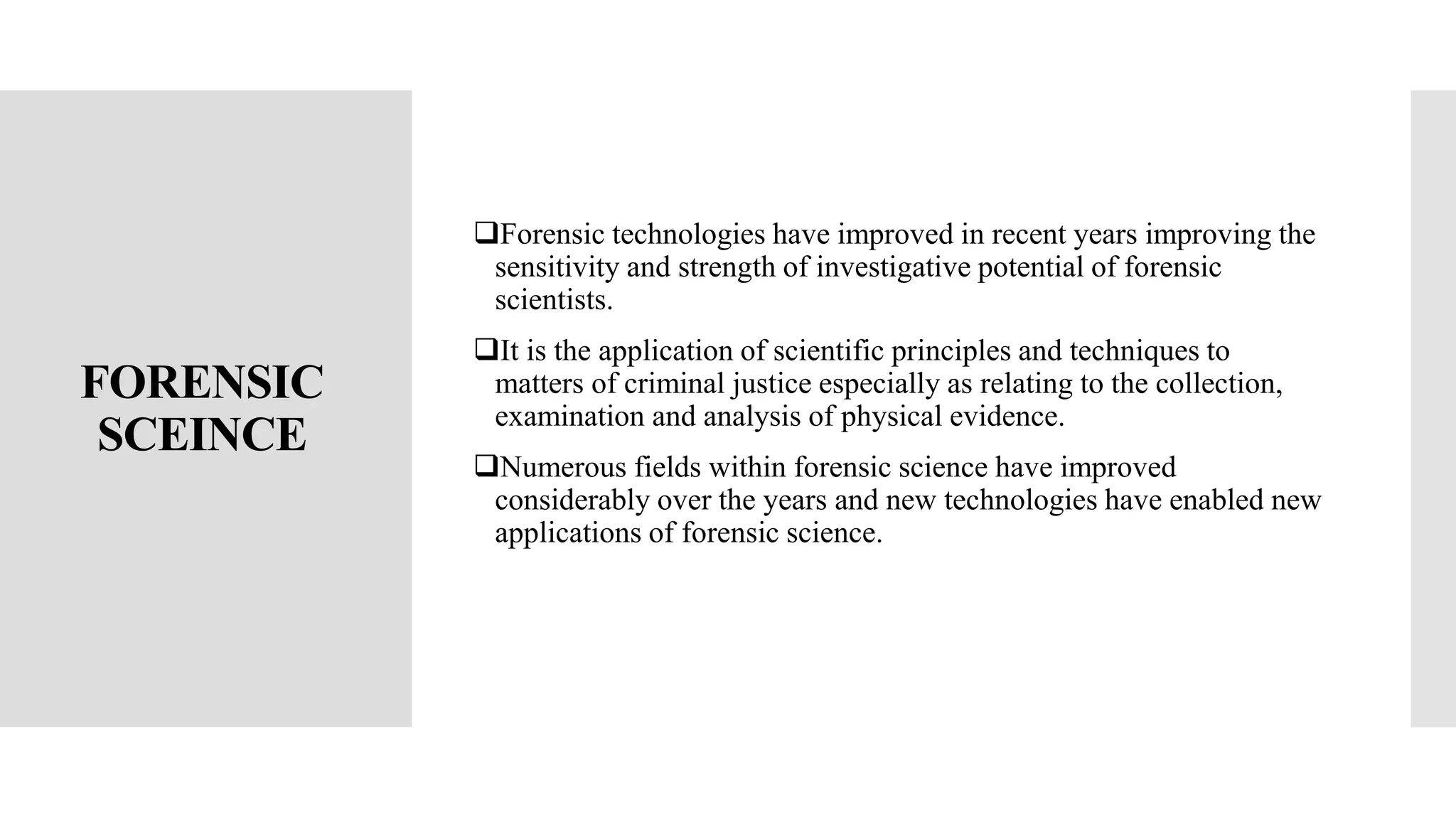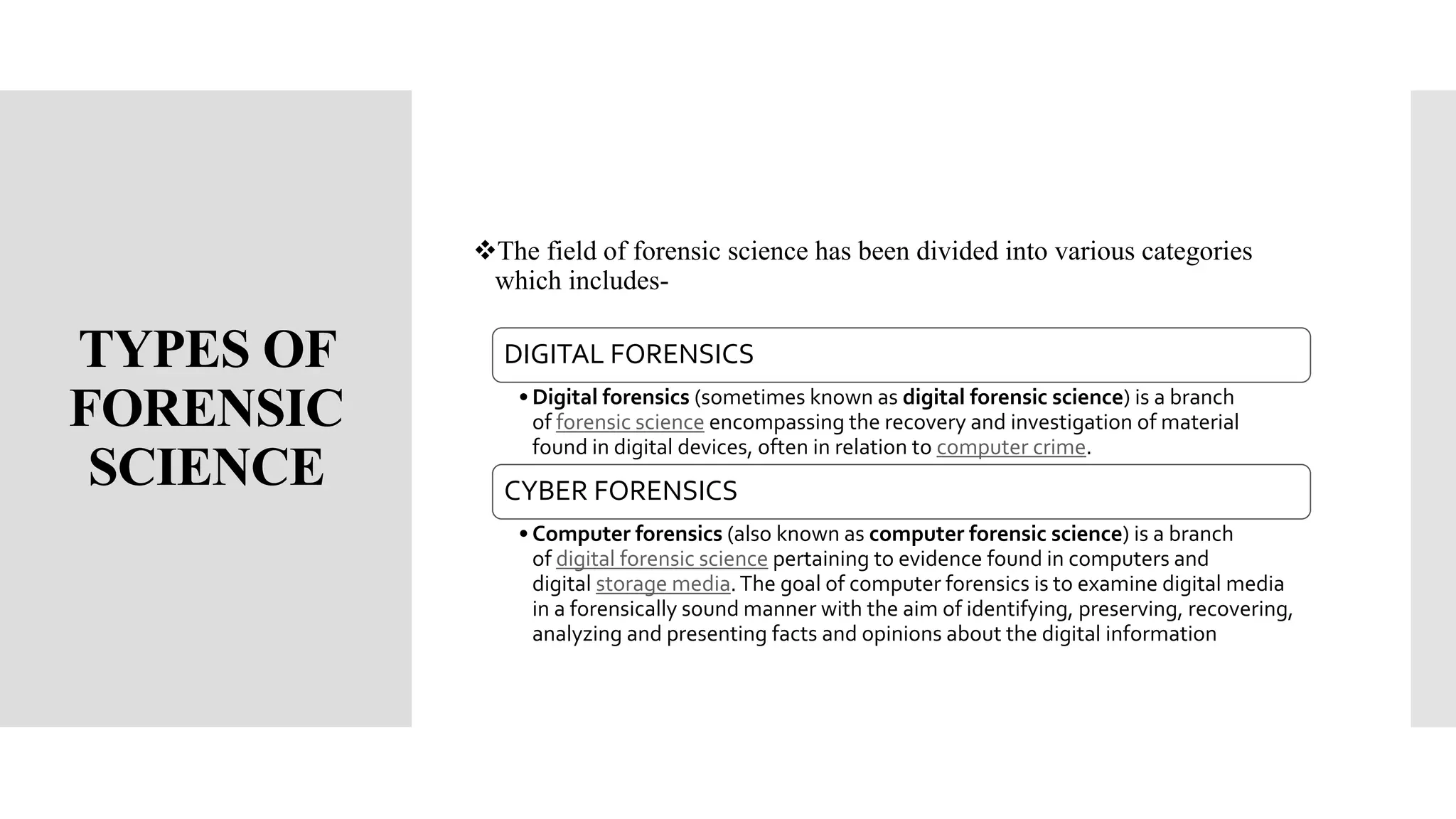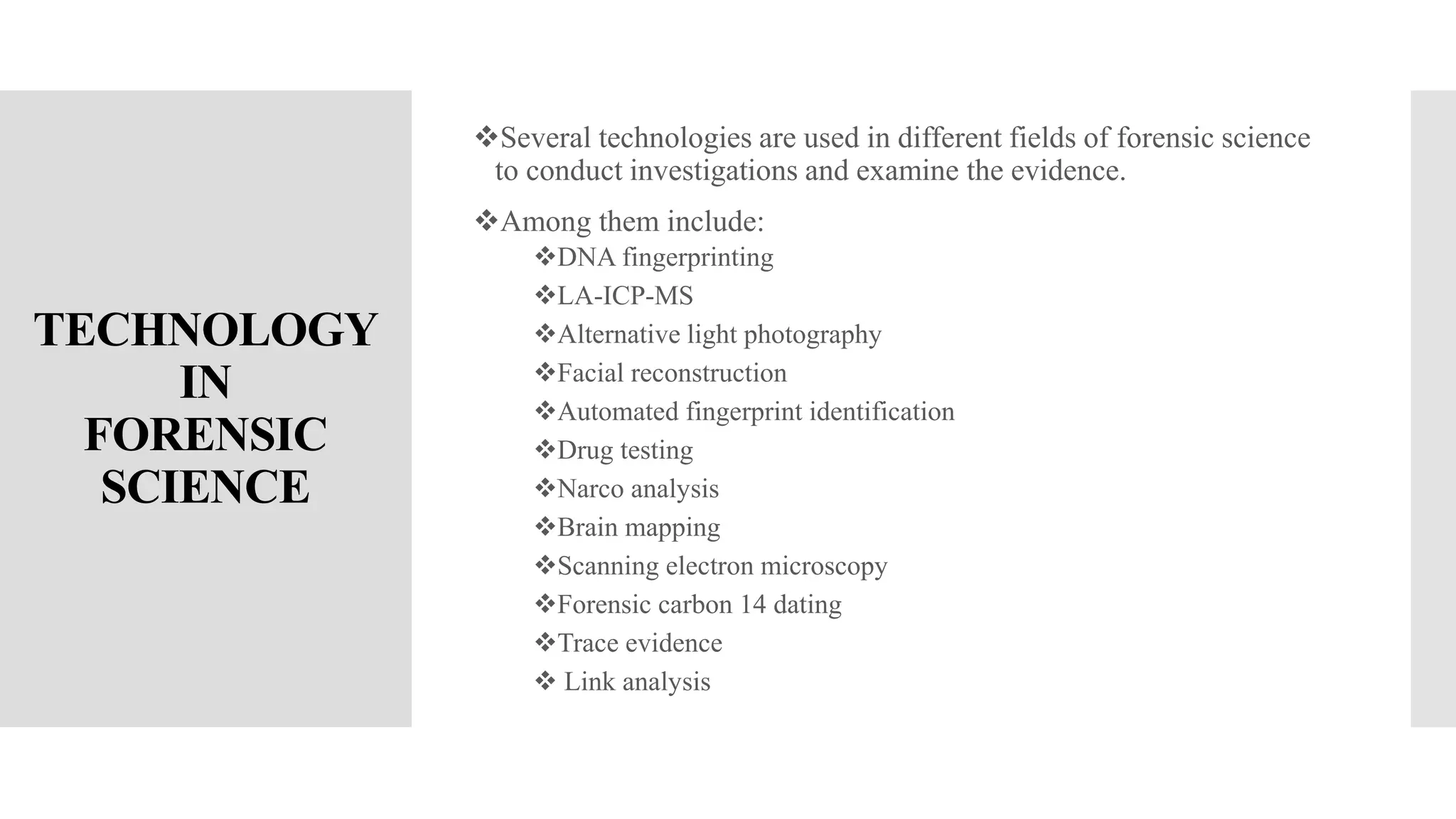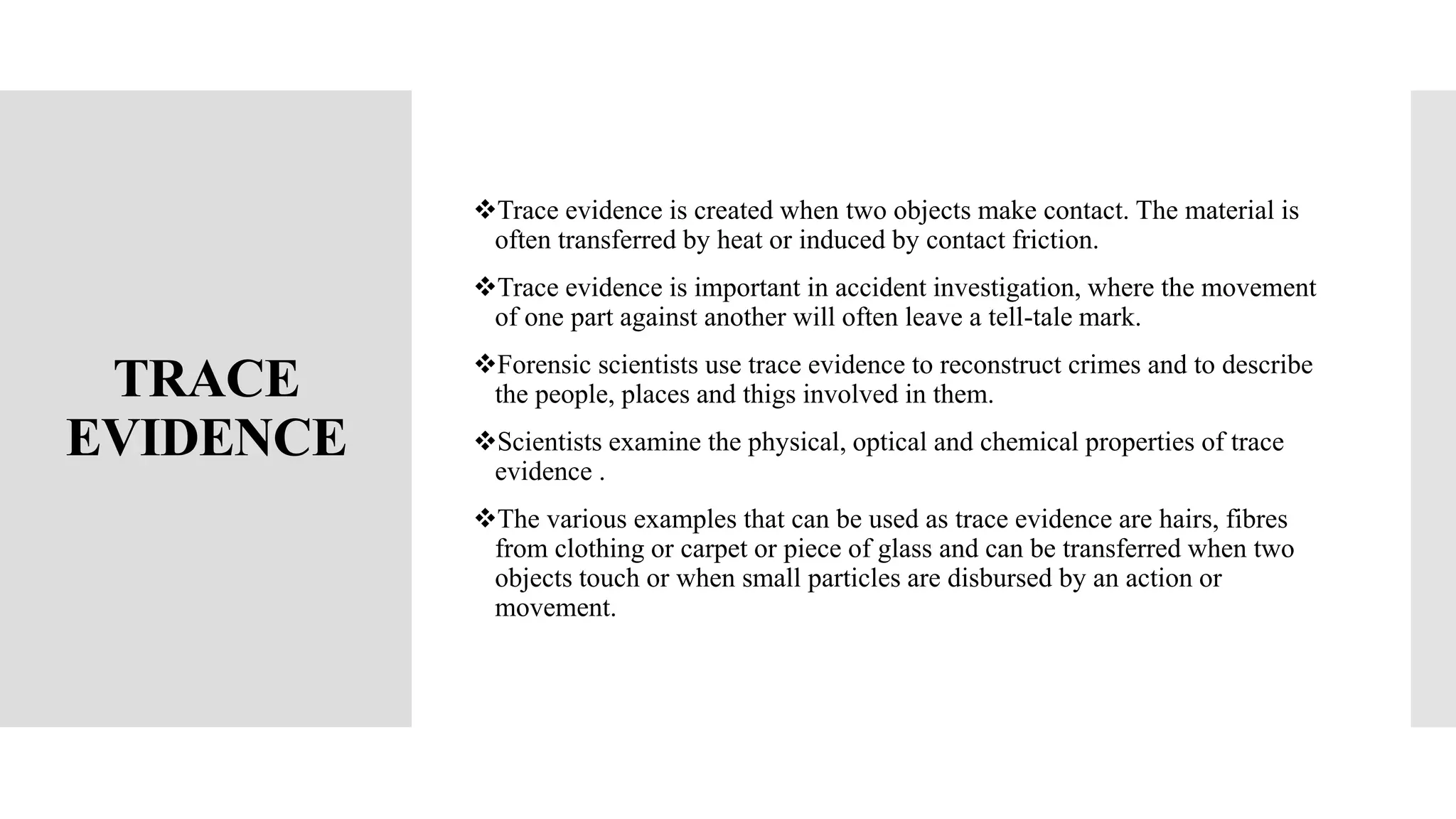The document discusses advancements in forensic science technologies that enhance investigative capabilities, focusing on various branches such as digital forensics, DNA profiling, and ballistic photography. It details multiple forensic techniques, including laser ablation ICP-MS, alternative light photography, and narco analysis, explaining their applications and importance in criminal investigations. Overall, the technological evolution in forensic science promises to improve the efficiency of crime-solving and the criminal justice system.


















